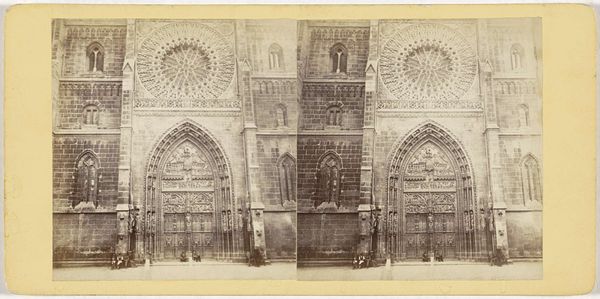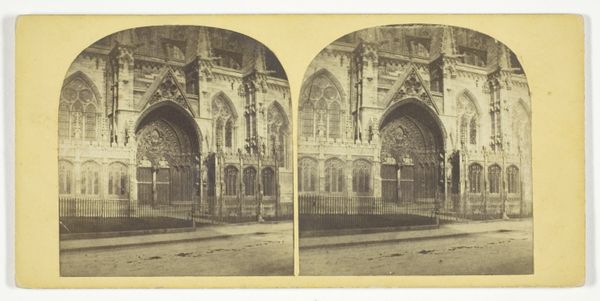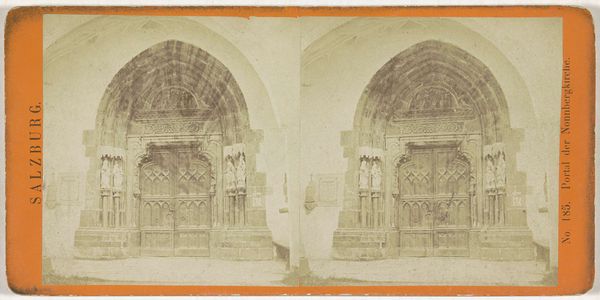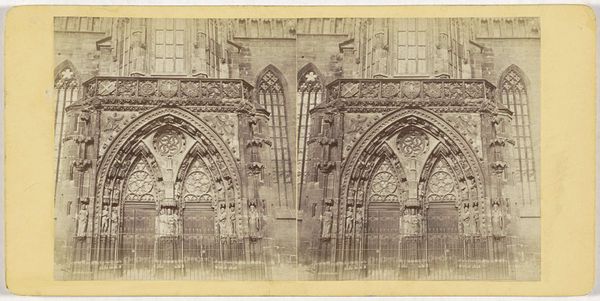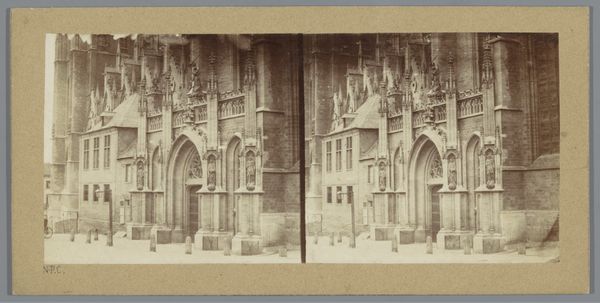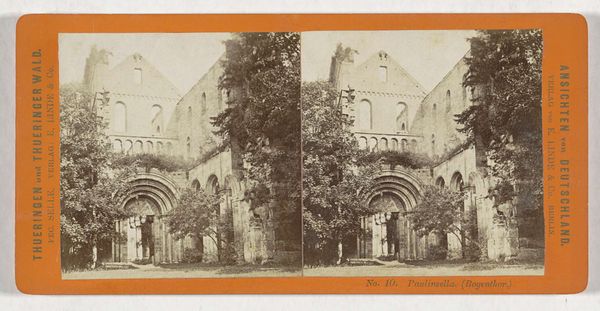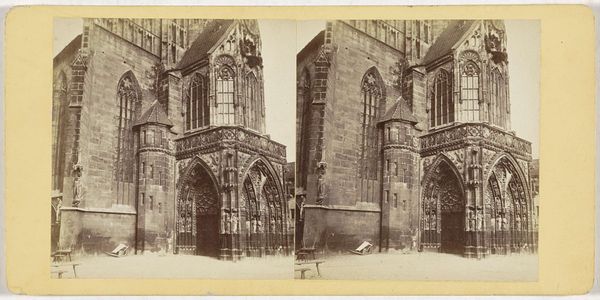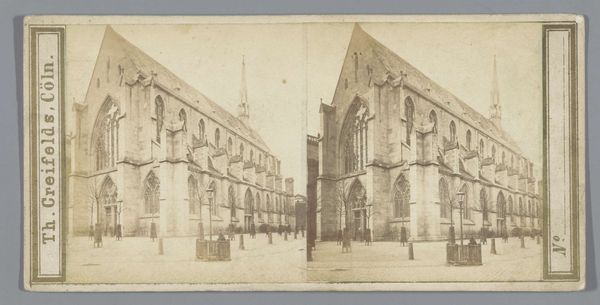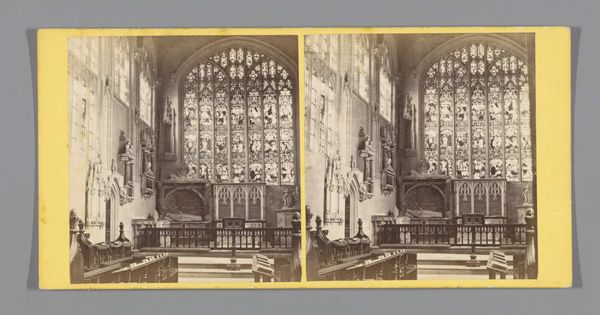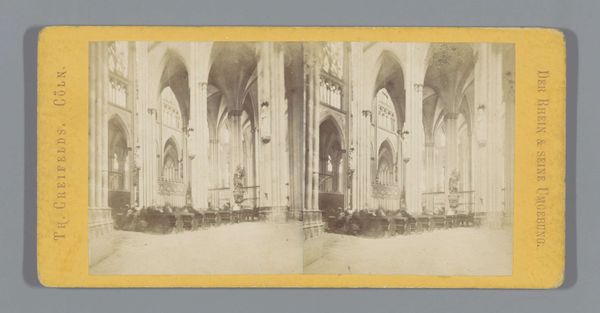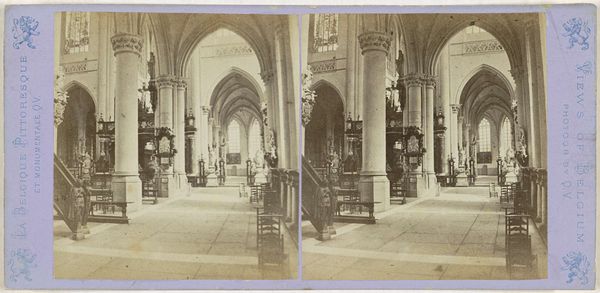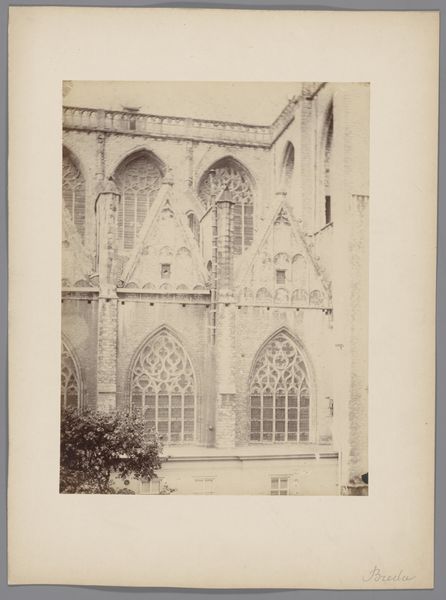
Dimensions: height 86 mm, width 175 mm
Copyright: Rijks Museum: Open Domain
Editor: So, this is Johann Friedrich Stiehm’s gelatin silver print, “Portal of the Saint Sebaldus Church in Nuremberg, Germany,” created sometime between 1868 and 1900. I’m immediately drawn to the contrast between the ornate Gothic detailing above the doorway and the simple, solid wooden doors themselves. What strikes you when you look at this image? Curator: Immediately, I observe the interplay of light and shadow defining the architectural forms. Notice how Stiehm uses the monochromatic palette to accentuate the intricate tracery of the portal, the repeating geometric patterns a hallmark of Gothic design. The photograph’s success resides in its ability to capture texture and form, achieved through the tonal range of the gelatin silver process. Editor: The texture really pops, now that you mention it. Are you saying that the photographic technique itself becomes a key element in how we appreciate the building's design? Curator: Precisely. Stiehm's choice of gelatin silver print allows for a sharp delineation of lines and a nuanced gradation of tones, enriching our understanding of the building's form. Consider, too, the composition: the symmetrical framing draws attention to the central portal, turning the architecture itself into a subject divorced from immediate contextual concerns. Do you see how the print directs our attention? Editor: I see how the architectural structure's innate characteristics take center stage. Curator: Exactly. It’s a focused study of architectural aesthetics and photographic process. Stiehm, through the careful arrangement of form, line, and tonality, allows the architecture to speak for itself. What will you take away from this experience? Editor: Now I see the artist's skill in bringing out the structure's design and textures. Curator: Indeed. Considering visual components enhances comprehension.
Comments
No comments
Be the first to comment and join the conversation on the ultimate creative platform.
